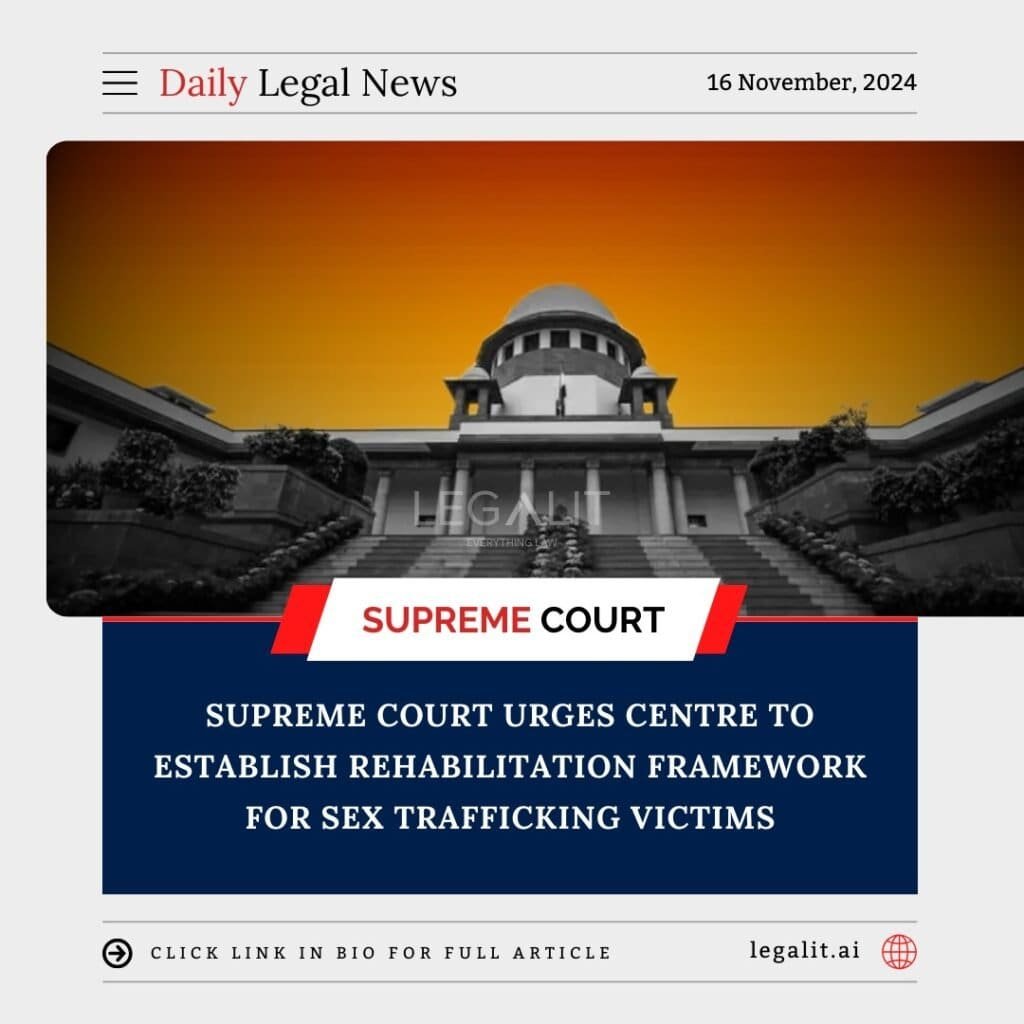
The Supreme Court of India has strongly urged the Central Government to establish a comprehensive framework for the rehabilitation of victims of sex trafficking. The court emphasized the need for a well-structured system to support survivors, focusing on their emotional, physical, and psychological recovery, and integration back into society.
Background:
The issue of sex trafficking has long been a critical concern in India, with thousands of women and children being subjected to exploitation each year. Victims often face severe trauma and have little access to rehabilitation or legal redress. The Supreme Court took up the matter, pointing out the urgent need for coordinated efforts to ensure the rehabilitation and reintegration of victims.
Court’s Rationale:
- Need for a Structured Rehabilitation Program: The Supreme Court highlighted that while there are various government schemes aimed at combating trafficking and protecting victims, there is a lack of a coordinated and sustainable framework for rehabilitation. The court stressed the importance of providing survivors with proper rehabilitation, including education, vocational training, healthcare, and psychological counseling.
- Focus on Victim-Centered Approach: The court underscored that any rehabilitation framework must focus on the victims’ needs, ensuring their safety, dignity, and the opportunity to rebuild their lives. The Court stated that the process should be victim-centric and not just limited to their immediate rescue and protection.
- Involvement of NGOs and Civil Society: The court emphasized the crucial role of non-governmental organizations (NGOs) and civil society in the rehabilitation process. Collaboration with such organizations can help ensure that victims receive the necessary support, both legally and emotionally.
- Implementation of Existing Laws: While urging the Centre to develop a rehabilitation framework, the Supreme Court also noted that existing laws like the Immoral Traffic (Prevention) Act, 1956 (ITPA) should be more rigorously implemented. The court expressed concern over the systemic failure to provide adequate care and protection to the victims of sex trafficking.
Recommendations:
The Supreme Court recommended the following steps to the Centre for an effective rehabilitation framework:
- Development of State and District Level Plans: The Centre should direct the states and union territories to prepare district-level plans for victim rehabilitation, involving all stakeholders in the process.
- Setting Up Rehabilitation Homes: The Court emphasized the need for government-sponsored rehabilitation homes equipped with necessary resources like legal support, medical facilities, and education programs to help victims reintegrate into society.
- Post-Trafficking Care: There should be a strong focus on long-term care and follow-up services for survivors, including mental health support, reintegration programs, and awareness campaigns to reduce stigma.
- Creating Awareness and Training Programs: The court urged for continuous awareness campaigns on the issue of sex trafficking and training programs for law enforcement and officials involved in the rehabilitation process to ensure better handling of such sensitive cases.
Implications:
- Strengthening Victim Support Systems: The Supreme Court’s intervention emphasizes the need for a victim-centered approach in dealing with sex trafficking cases. If implemented, the suggested framework could significantly improve the quality of life for survivors and facilitate their integration into society.
- Government Responsibility: The Court’s urging to the Centre highlights the government’s crucial role in establishing a national-level framework for rehabilitation. This may prompt the government to allocate more resources towards creating a unified system of support for trafficking survivors.
- Legal and Social Reforms: This move by the Supreme Court may catalyze further reforms in the country’s anti-trafficking laws, ensuring that rehabilitation and victim care are prioritized alongside prevention and punishment.
- Long-Term Social Impact: A well-established rehabilitation system can provide a long-term solution for the survivors of trafficking, helping to break the cycle of exploitation and offering a chance at a new life, free from trauma and abuse.
Conclusion:
The Supreme Court of India‘s call for the establishment of a robust rehabilitation framework for sex trafficking victims underscores the urgent need to address the plight of survivors. A comprehensive, victim-focused system that prioritizes safety, dignity, and reintegration is essential to ensuring that victims not only survive but thrive after their traumatic experiences.